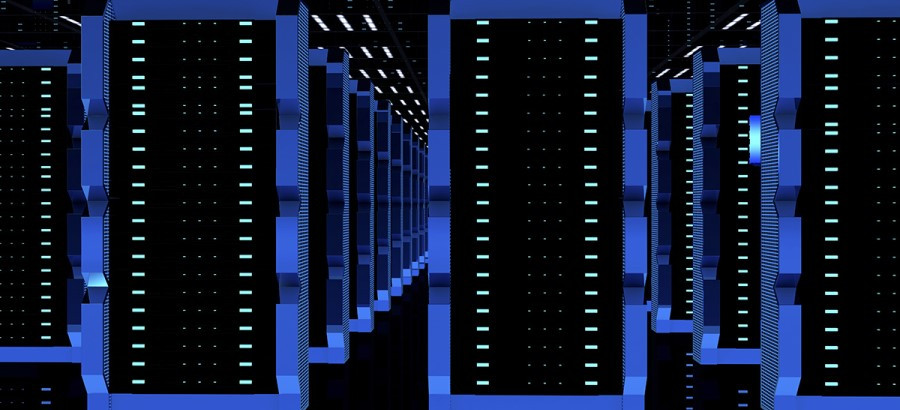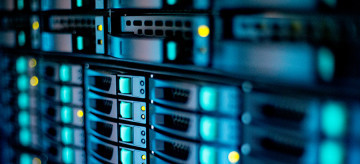- Advertising
- Bare Metal
- Bare Metal Cloud
- Benchmarks
- Big Data Benchmarks
- Big Data Experts Interviews
- Big Data Technologies
- Big Data Use Cases
- Big Data Week
- Cloud
- Data Lake as a Service
- Databases
- Dedicated Servers
- Disaster Recovery
- Features
- Fun
- GoTech World
- Hadoop
- Healthcare
- Industry Standards
- Insurance
- Linux
- News
- NoSQL
- Online Retail
- People of Bigstep
- Performance for Big Data Apps
- Press
- Press Corner
- Security
- Tech Trends
- Tutorial
- What is Big Data
Is This the New Normal? Embrace the Future Standards for Servers and Data Centers
While the long-term effects of the COVID-19 pandemic are hard to predict, it is obvious that the world will change. The way we think about the different aspects of life, work, and education is shifting, and online presence is now a must. However, with data centers on lockdown, employees quarantined at home, and remote hand services being stretched to their limit, keeping servers and services online has never been more challenging.
History has shown us that major improvements or changes in industries are triggered by catastrophic events. For example, during the Second World War, many of the technologies that shape the world today were developed or funded by governments that were way more willing to accept unconventional ideas. Think of jet airplanes, rockets, radar technology, wireless communication, intelligent weapons, and so on, all of them existed previously but were only mass adopted during the war and became the standard afterwards.
The coronavirus pandemic will also force advancements in different industries, and this article focuses on IT infrastructure. How does the current environment for servers and data centers look like, can data centers handle a longer period of lockdown, and what should we learn from this global emergency?

Need for Data Centers and Servers
Most people see servers as more abstract than they really are, but these machines are the ones that currently keep the world moving forward. Not even governments realized the importance of servers and data centers until recently, as at the beginning of the lockdown, data center staff members were not officially allowed to go to work in some places of the world.
The UK is one of the first countries that has included data centers in the list of "essential infrastructure," and employees are now permitted to do their job and keep facilities online. Currently, the UK and much of the US are among the few countries that included telecommunications and digital infrastructures to their exemption list in March, with Singapore following suit in April.
Servers represent the backbone of any online activity. A server is at work every time we order something online, read a post on social media, watch news or movies online, or when a payment is processed. The cloud, as abstract as it may seem, is also based on servers in a data center, just that the way the resources are allocated is different. Only few companies still keep their servers on-premise, while organizations rely on data center services.
With the lockdown came the increased demand for internet bandwidth as people moved all of their activities online, either working from home, resorting to the internet to keep in touch with friends and family, or for entertainment purposes, which put data centers in a challenging situation.
The Old Normal
Although it’s a high-tech industry, data centers rely a lot on man power: employees who manage and administrate the data center, who monitor the systems, who respond to remote hands operations, and so on. In addition, data centers also depend on third party suppliers such as internet providers, equipment sourcing, transportation for newly bought components, cleaning services, and more, which are critical to the facilities’ operation. Typically, data centers and servers cannot be fully managed remotely, and the human factor represents a major part of it: inside the huge data center blocks, teams are working to keep the infrastructures running and services active.
How Long Can Data Centers Keep Up With the Increased Demand?
The lockdown work restrictions and the increased demand in online activities are putting a strain on the maintenance that a data center demands. Data centers need to operate during this crisis, providing business continuity and keeping activities and businesses online. But the longer the lockdown, the harder it will be to continue data center operations and avoid server failures.
Depending on how long the quarantine lasts, and how rapidly companies adapt to current needs, this question brings up even more confusion. What is certain, however, is that one differentiator for ongoing activity in data centers and their servers running smoothly is the way the different providers prepared before the pandemic hit, for instance having a number of replaceable components readily available on site.
Another effect of the quarantine regulations is that data centers worldwide have reduced their on-premises staff. Most of them allowed departments such as sales, marketing, finance, and management, and even network and systems administrators, to work remotely. Moreover, they have also reduced maintenance to essential-only. Although this is a temporary measure, no one knows exactly how long the lockdown will stay in place, and an extended period of reduced maintenance might bring additional issues. Hardware deterioration or system breakdowns are to be expected, especially since unessential equipment failure might be tolerated more than usual.
The New Normal
What we should learn from this experience is that the data center industry needs to adopt new patterns altogether to replace outmoded processes and accept automation. In today’s world, automation is a must-have rather than a nice-to-have. Some data centers and infrastructure providers already have automation solutions in place, which gives them a competitive advantage, both cost-wise and customer-wise.
The current situation brings in the limelight the necessity of:
- Remote monitoring systems.
- Remote replacement of servers in case of failure: easily replacing a broken server with minimal downtime and without the need for physical interaction with it.
- Redundant systems: if one breaks down, there’s no need to immediately replace it. Higher quality hosting providers offer more redundancy than cheap providers.
- Scalability on request: the ability to increase or decrease hardware resources as needed.
However, these solutions are here to stay. The data centers that implement them to address current needs will continue to benefit from lower operational costs even after the end of the crisis. In time, this will force all data centers to embrace automation and even remote work, changing the landscape of the industry as we know it.
This is both the largest work-from-home experiment to date and the largest migration to online services and to an “always-on” mentality. With users’ online consumption increasing, the need for data center infrastructure and capacity will also increase, and proper practices should be adopted as fast as possible. COVID-19 is reshaping the world, and we all must adapt to the new reality.
About the Author
With more than 15 years of experience in IT Project Management and R&D, Mihail Musat is an experienced trainer, author and promoter. He currently serves as Director of Technical Operations at Bigstep.
Article originally posted on DZone.
Readers also enjoyed:

Cloud Computing Vs. Edge Computing: Friends Or Foes?


Leave a Reply
Your email address will not be published.